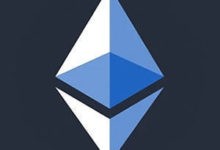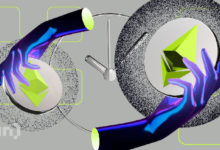Upcoming Upgrades That Will Shape the Ethereum Ecosystem

If you’re feeling overwhelmed by all the upgrades and launches happening in the Ethereum ecosystem, we’ve got you covered with important dates to keep in mind.
The Shanghai upgrade is drawing near
The Shanghai upgrade, more accurately known as “Shapella,” will enable the release of staked ether (ETH) withdrawals. Ever since Ethereum transitioned to a proof-of-stake (PoS) consensus mechanism, the network began using validators who stake 32 ETH to approve and add blocks to the blockchain.
This article originally appeared in Valid Points, CoinDesk’s weekly newsletter breaking down Ethereum’s evolution and its impact on crypto markets. Subscribe to get it in your inbox every Wednesday.
Before validators joined the PoS blockchain, they agreed that their staked ETH and any accrued rewards would remain locked up until Shanghai. Some validators have had their ETH locked up since as early as December 2020, when the PoS “Beacon Chain” went live. But, finally, the time for unlocking those rewards is nearing.
Ethereum developers haven’t inked in an official date, but those working on the blockchain have said they are aiming for March for the big upgrade.
Given that the calendar has already flipped to March, there’s a strong likelihood that Shanghai might be delayed to April. Ethereum developers ran a second dress rehearsal of Shanghai earlier this week on the Sepolia testnet, but they have yet to decide when the final dress rehearsal will occur.
If developers continue to run tests three weeks apart as they have done with Sepolia and Zhejiang, Goerli will likely occur around March 20, which could push the mainnet Shanghai upgrade into early April. (Ethereum is notorious for running a touch behind schedule, although last year’s Merge won plaudits for its mostly smooth execution.)
Read more: What Is the Ethereum Blockchain’s Shanghai Hard Fork, and Why Does It Matter?
Optimism to upgrade to Bedrock
Optimism, an Ethereum layer 2 scaling system, will go through a major upgrade in March that aims to decrease transaction fees, increase the speed of transactions and enhance smoother compatibility with the Ethereum Virtual Machine (EVM).
The layer 2 protocol aims to lower the cost of Ethereum transactions while maintaining the security of the Ethereum blockchain. It does this by providing an “Optimistic rollup,” a type of scaling system that bundles a bunch of transactions and sends them back to the Ethereum blockchain as a single transaction. The cost of that one transaction is then split among many users.
The upgrade, known as “Bedrock,” will be a major upgrade to the network. Some have said the upgrade will help Optimism compete with its main competitor, Arbitrum.
Optimism initially tweeted in early February that it was reviewing the specifications for the Bedrock upgrade, scheduled for March 15. But, a few weeks later, the Optimism Foundation announced it would postpone the vote on the upgrade to March 2–April 5 due to some bugs found in the code changes.
The upgrade itself won’t affect end users but it will take about four hours for Optimism to upgrade to Bedrock, according to a post on their governance website. Given that Optimism was supposed to upgrade two weeks after the initial vote cycle, the new timeline appears to indicate Bedrock will go live in mid-April.
In February, OP Token, the native token for Optimism, surged 25% amid news of the Bedrock upgrade.
Read more: What Are Rollups? ZK Rollups and Optimistic Rollups Explained
The ZK-rollup race intensifies
Another scaling project to Ethereum, Polygon, is coming out with its own rollup system in March.
Polygon has been working on its own Zero-Knowledge Rollup (ZK Rollup) for a while, and in February announced the launch date of its beta zkEVM for March 27.
ZK rollups use complex cryptography that create “proofs” that show that a transaction is valid using only minimal information about that transaction. The zkEVM deploys the Ethereum Virtual Machine (EVM) for its ZK rollup, allowing developers to move over their Ethereum smart contracts without any hiccups.
ZK technology was once seen as a milestone that would be years away, but others in the ZK rollup space are racing to be the first to launch their rollup solutions.
Matter Labs recently announced that it would rebrand and make open source its ZK rollup, zkSync 2.0, to zkSync Era, though it did not say when the full network would go live. Developers of Scroll, another layer 2 on Ethereum, have also said they are coming out with their own ZK rollup. Earlier this week, Scroll announced it is taking the zkEVM to Ethereum’s Goerli testnet.
So who will release their full-fledged ZK rollup first? Based on the heightened level of activity in this arena, the answer might come sooner rather than later.
Read more: Polygon Sets March Date for zkEVM Mainnet Beta to Go Live






 Bitcoin
Bitcoin  Ethereum
Ethereum  Tether
Tether  USDC
USDC  Dogecoin
Dogecoin  Cardano
Cardano  TRON
TRON  Chainlink
Chainlink  Stellar
Stellar  LEO Token
LEO Token  Hedera
Hedera  Bitcoin Cash
Bitcoin Cash  Litecoin
Litecoin  Monero
Monero  Dai
Dai  OKB
OKB  Gate
Gate  Ethereum Classic
Ethereum Classic  Cronos
Cronos  VeChain
VeChain  Cosmos Hub
Cosmos Hub  Algorand
Algorand  KuCoin
KuCoin  Maker
Maker  Stacks
Stacks  Tether Gold
Tether Gold  IOTA
IOTA  Theta Network
Theta Network  Tezos
Tezos  Zcash
Zcash  TrueUSD
TrueUSD  NEO
NEO  Polygon
Polygon  Dash
Dash  Zilliqa
Zilliqa  Synthetix Network
Synthetix Network  0x Protocol
0x Protocol  Decred
Decred  Qtum
Qtum  Basic Attention
Basic Attention  Siacoin
Siacoin  Holo
Holo  Ravencoin
Ravencoin  NEM
NEM  DigiByte
DigiByte  Enjin Coin
Enjin Coin  Ontology
Ontology  Nano
Nano  Hive
Hive  Waves
Waves  Lisk
Lisk  Status
Status  Steem
Steem  Numeraire
Numeraire  Pax Dollar
Pax Dollar  BUSD
BUSD  Huobi
Huobi  OMG Network
OMG Network  Bitcoin Gold
Bitcoin Gold  Ren
Ren  HUSD
HUSD  Bytom
Bytom